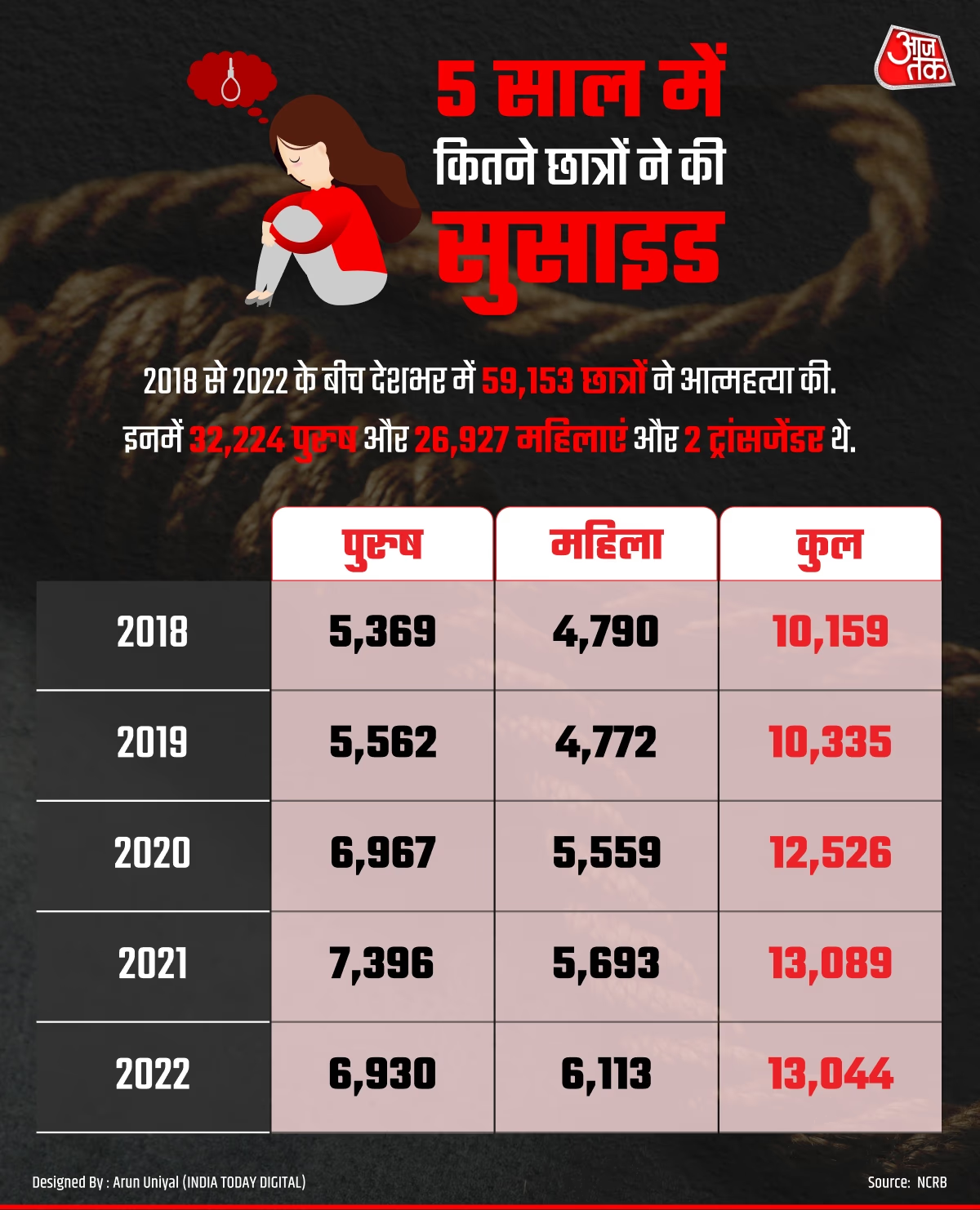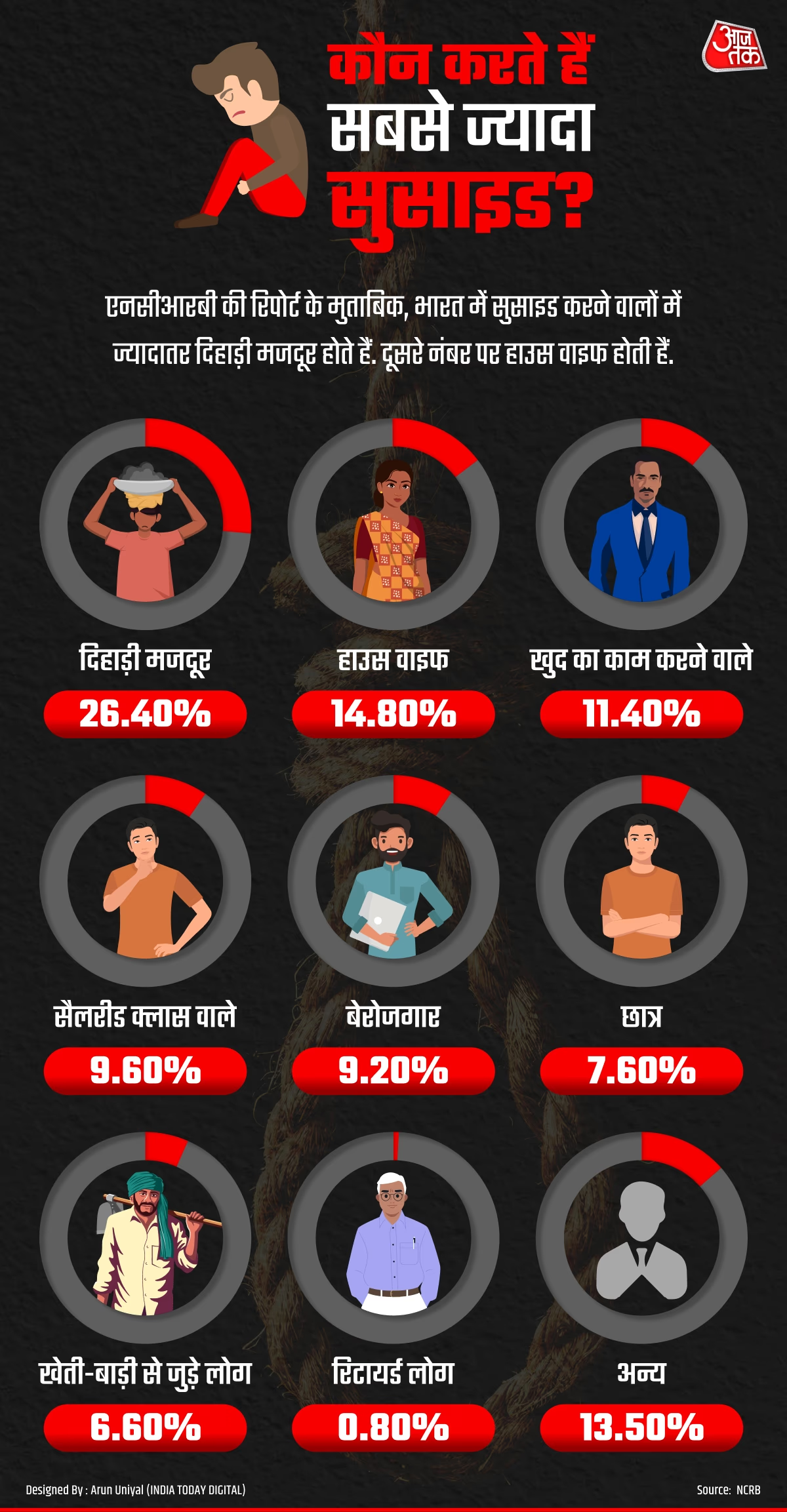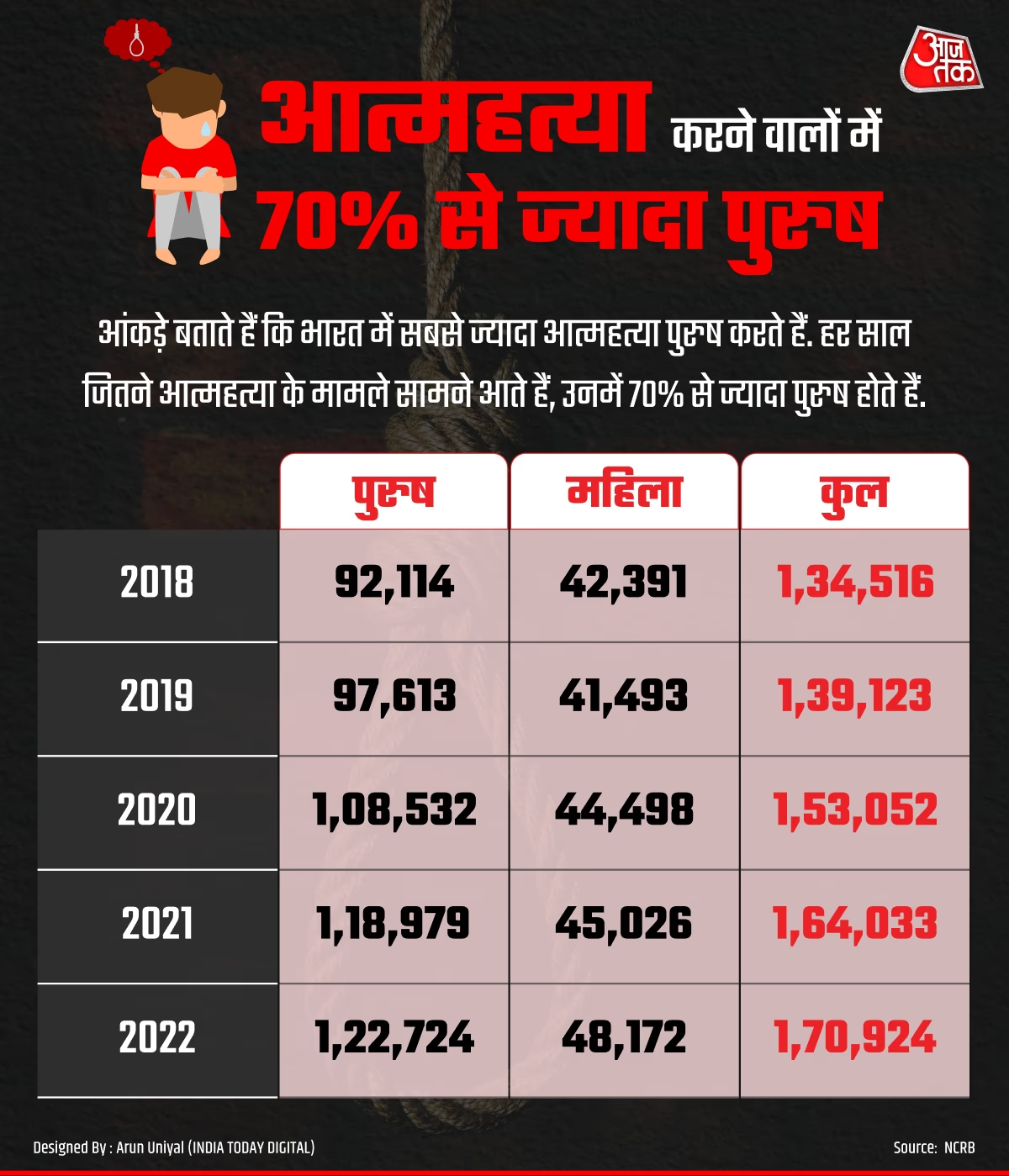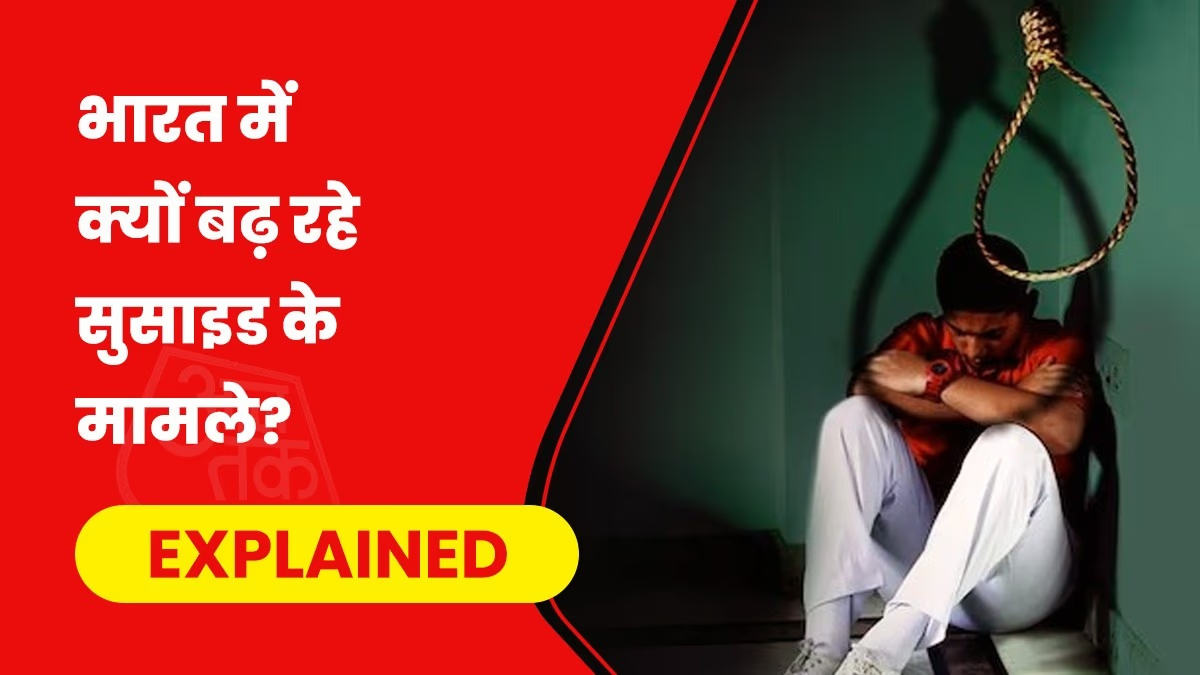In the capital city of Delhi, a medical student committed suicide. 30-year-old Amit Kumar was studying medicine at Maulana Azad Medical College. Amit Kumar hanged himself in his hostel room. Similarly, last month in Kota, a 16-year-old student also committed suicide by hanging himself in his hostel room. He had come from Bihar for IIT coaching in Kota.
When searching online, you will find numerous cases of student suicides. However, the new revelation about student suicides is truly shocking.
According to a new report, the rate of population growth in India is slower than the rate of student suicides. This indicates a rapid increase in suicidal tendencies among students in India.
This report was shared at IC3's annual conference. It was prepared based on data from the National Crime Records Bureau (NCRB), a central government agency. IC3 is a non-profit organization that works on education worldwide.
What Information Came to Light?
The report states that the number of suicides in India is increasing by 2% annually. However, the rate of student suicides has increased by 4% annually. It warns that many cases of student suicides are not even recorded, highlighting the severity of the problem.
The report claims that over the past decade, the population of individuals up to 24 years old has decreased from 582 million to 581 million, whereas student suicides have risen from 6,654 to 13,044.
UNICEF's report indicates that 1 in 7 individuals between the ages of 15 and 24 in India is dealing with poor mental health, including symptoms of depression. Surprisingly, only 41% of those surveyed considered seeking help from a counselor to handle their mental health challenges.

Source: aajtak
Also Read:
Frightening Statistics...
- In 2021, 13,089 students committed suicide. In 2022, the number was slightly lower at 13,044. There was a marginal decrease compared to 2021.
- Compared to 2021, the number of suicides in 2022 increased by 4%. In 2021, 1.64 lakh people committed suicide, while in 2022, over 1.70 lakh people took their own lives.
- Out of all the suicides in the country in 2022, 7.6% were students, while 6.6% were people associated with agriculture. This means students are committing suicide more than those involved in farming.
- Gender-wise, the number of male students committing suicide is higher. However, over the past decade, cases of male student suicides have increased by 50%, while female student suicides have gone up by 61%. Over the past five years, the suicide rate among both male and female students has increased by 5% annually.

Source: aajtak
Maharashtra, Tamil Nadu, and Madhya Pradesh are the top three states with the highest number of student suicides. In 2022, more than 4,500 student suicides were reported in these three states.
Uttar Pradesh, the most populous state, is also among the top five states with the highest number of student suicides. In 2022, 1,060 student suicides were reported in Uttar Pradesh, while Rajasthan recorded 571 cases.
More Men Taking Their Own Lives
NCRB data shows that the number of men committing suicide is significantly higher than that of women.
Two decades of data reveal that in India, 6 to 7 out of every 10 people who commit suicide are men. From 2001 to 2022, the number of women committing suicide ranged between 40,000 to 48,000 annually. Meanwhile, the number of men committing suicide increased from 66,000 to over 100,000.
In 2022, over 1.70 lakh people committed suicide, with more than 122,000 men, meaning that, on average, 336 men committed suicide every day—that’s one man every four and a half minutes.
Not just in India, but global statistics also show higher suicide rates among men. According to WHO, out of every lakh men worldwide, 12.6 commit suicide, whereas, among women, the rate is 5.4.

Source: aajtak
Why Is This Happening to Men?
Each individual may have different reasons for committing suicide. Experts believe that depression and stress are increasing the tendency towards suicide. Sometimes, medical conditions are also a factor. Additionally, when a person finds no way out of their troubles, they may resort to suicide.
NCRB's report also discusses the reasons behind suicides. It states that the majority of suicides are due to family problems and illnesses (like AIDS, cancer, etc.). Last year, 32% of suicides were due to family issues, and 19% were because of illnesses. However, the report does not specify the reasons for suicides among men and women separately.
Interestingly, nearly 60% of the men who committed suicide were either daily wage workers, entrepreneurs, or unemployed, suggesting that financial difficulties may have been a contributing factor.
In 2011, research tried to determine why men commit suicide more often than women. The study revealed that men are often perceived as strong and powerful, preventing them from sharing their feelings of depression or suicidal thoughts with others, ultimately leading them to take their own lives.
In 2003, a study in Europe also looked at male suicides and found that the risk of suicide increases for men during periods of unemployment, as they feel they are unable to meet societal and familial expectations.
Additionally, substance abuse is considered a factor contributing to the higher suicide rates among men, as addiction exacerbates suicidal tendencies.
Also Read:
Is Attempting Suicide a Crime?
There is often debate on whether attempting suicide is a crime. The answer is: it used to be, but not anymore. Attempting suicide was a crime under IPC, but there is no provision for it under the Indian Penal Code now. However, Section 224 states that if someone tries to force or interfere with a public servant into doing or forbearing from any lawful act by suicide attempt, they can be punished with up to one year of imprisonment and a fine.
However, Section 115 of the Mental Healthcare Act 2017 provides relief to those struggling with severe distress who attempt suicide. It states that if it is proven that the person attempting suicide was under severe stress, they cannot be punished.
Nevertheless, suicide remains a serious psychological and social issue. If you're struggling, talk to friends or relatives or seek medical advice. Timely and appropriate advice can significantly help in preventing it.




